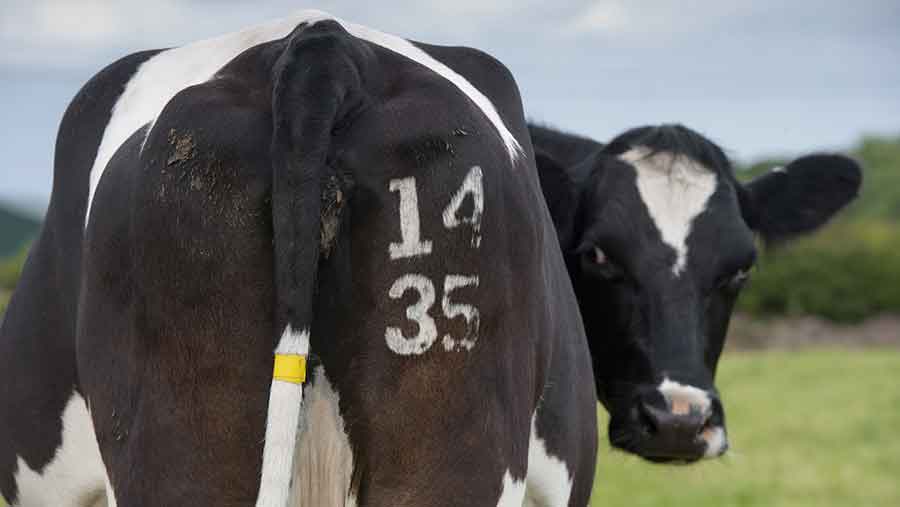Challenging short-term future for dairy industry
 © FLPA / Wayne Hutchinson/Rex/Shutterstock
© FLPA / Wayne Hutchinson/Rex/Shutterstock The next year will be difficult for milk producers as the cuts and efficiencies made during the dairy crisis affect technical and financial performance, according to agri-consultant, Promar.
The outlook came following its release of annual farm business accounts results for the year ending March 2016, in which profits in their sample were down 48.8% on the previous period.
See also: Performance data shows gap between best and worst NI farms
Despite suffering the worst dairy conditions for 30 years, the UK is yet to see a mass exodus of dairy farmers, with numbers shrinking just 1.6% over the past 12 months.
However, the consultants said some producers could be waiting for notice periods or contracts to run out, as well as the end of the EU milk reduction scheme before leaving the industry in 2017.
Efficiency savings, particularly lower calf numbers and retained youngstock made during the previous dairy cycle beginning in March 2014, would start to tell by the end of next year, said Promar.
Sample figures show that increases to youngstock in relation to herd size slowed over the last two cycles and genetic progress may have slowed due to reducing the use of AI to reduce costs.
See also: Milk market recovery reflected by EU SMP stock release
Although farmgate milk prices rose by 12.95% in the three months from June 2016, the reduction in national herd size, (down 2% between July 2015 and July 2016) and a fall in UK milk production, down 8.05% over the same period, meant producers wouldn’t be able to simply turn the taps back on moving into 2017.
Capital investment in the year to March 2016, which restricted the ability for herds to pick up production swiftly.
Savings struggle
These large savings could not continue indefinitely, said farm consultancy manager at Promar, Nigel Davies.
“These big cuts can be sustained for a few years but they can’t be put off forever. In the next two to three years producers will be forced to address these costs.”
Mr Davies said that current milk price increases would not be enough on their own to lead to a recovery in farm finances.
Brighter future
“With evidence of poorer quality forages and increasing feed prices, dairy margins will probably only hold in this year, but with prospects improving in the next financial year.”
Those who weathered the recent crisis and are most equipped moving into 2017 are producers who had reacted to the economic environment, pursued technical efficiencies and taken tough decisions, said Mr Davies.
“The crisis has left us with far more efficient dairy sector, with lots of producers making the most of forage and minimising bought in feed.”
“The best will plan ahead not just on the basis of this year’s expectations, but also the year beyond and the associated twists and turns of volatility.”
Promar Farm Business Accounts Dairy Farm Results 2015-16
- Average herd size in the sample went up 3.9% to 187 cows, but young stock on increased by just 1.5% on last year’s figures to 132
- Lower milk prices drove profits before subsidies down 48.8%, leaving £17,194 for family drawings, reinvestments and to meet existing commitments
- Subsidies made up 63.43% of average profit, a 14.58% increase on last year
- Efficiency a cow rose by 3.7%, equivalent to £54 a cow more in margin over purchased feed
- Total average debt stood at £556,000, an increase of 4.02% on the 12-months previous
- Private drawings fell from £35,040 to £32,877 (-6.17%). Combined capital spend (machinery, fixtures and buildings) dropped from £94,393 to £62,165 (-34.14%)
- Total commitments went up 14.41% from £64,744 to £74,075
- Despite this, the majority of sample farms were looking to invest and expand and were able to attract the necessary investment
- The sample was adjusted to reflect the UK dairy industry, with correlating numbers of aligned and non-aligned producers
